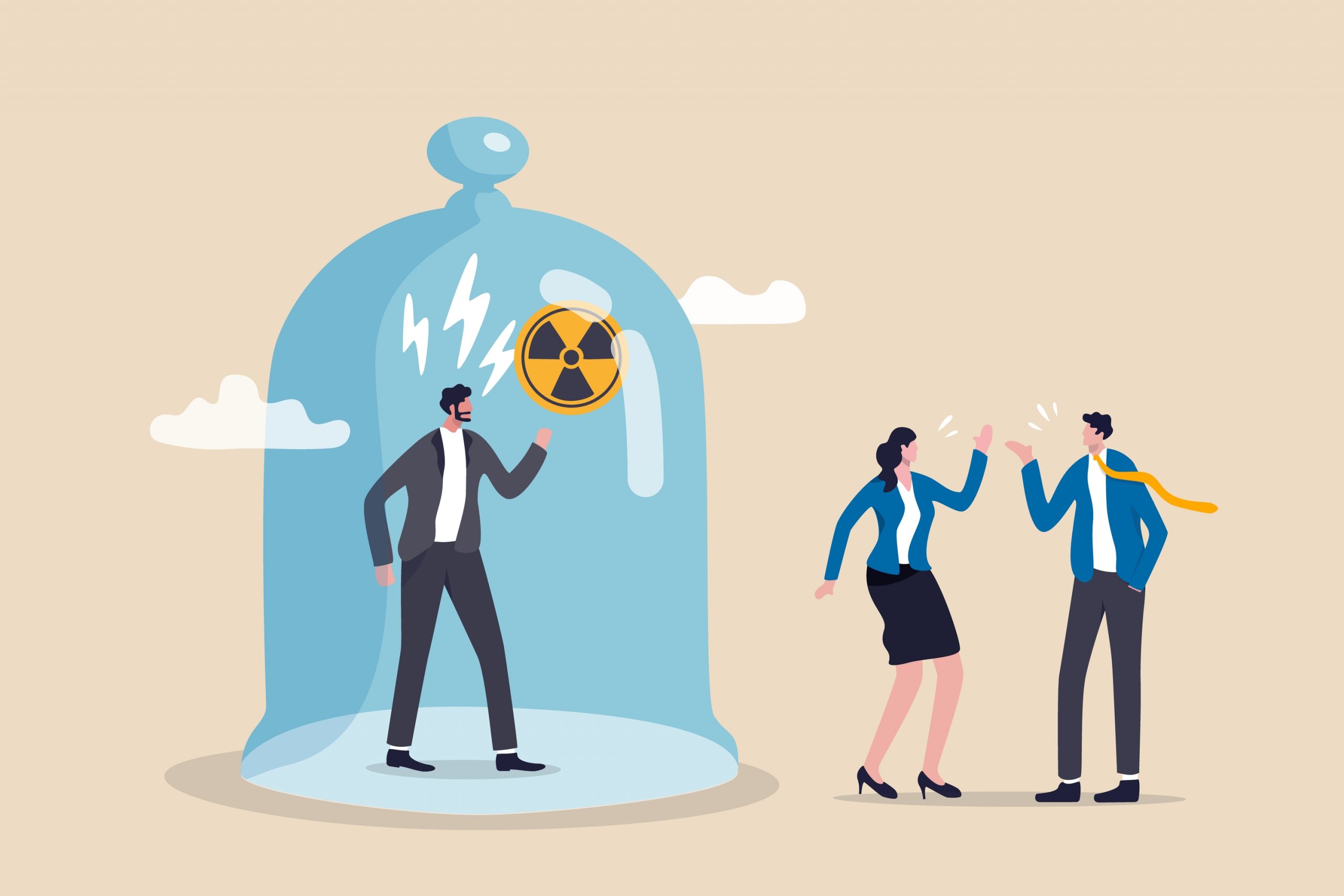Dr. Samantha Boardman is a clinical instructor in psychiatry and assistant attending physician at Weill-Cornell Medical College in New York. She is the author of “Everyday Vitality, Turning Stress Into Strength” and provides insight and advice on how to build vitality and boost resilience at The Dose .
Toxic is a word that gets thrown around a lot these days. As a psychiatrist, I hear it frequently during therapy sessions—to describe parents, siblings, neighbors, exes and co-workers.
Once primarily used to describe plants, arrows and chemicals, the adjective toxic—which is defined as “poisonous”—only recently started being applied to people. Self-help books and Britney Spears’s hit song certainly contributed to its journey from the literal to the metaphorical. In 2018, Oxford Dictionaries chose it as the word of the year. Social media is full of tips on how to spot a toxic person.
Toxic people are typically characterized as those who drain energy, create stress and who love to criticize. And that’s the problem: There is no room for nuance or context, even though most of us, at times, have been guilty of that exact same behavior. More than a description, labeling someone as toxic becomes a diagnosis of an untreatable condition, an irreversible defect. Once toxic, always toxic.
Inhibits understanding
Creating categories is useful when it helps the brain sort through the vast stimuli of everyday life. Every time we encounter a waist-high object with a flat surface and legs, for example, we can assume it’s some sort of table. This saves time and energy. But the tendency to categorize people can lead to reductionist assessments that inhibit understanding, reduce empathy and crush communication.
Referring to someone as toxic provides an excuse to distance ourselves from them. If they are toxic, we are justified in ignoring, avoiding and disengaging from them. No doubt there are people in this world whose behavior is deeply problematic and harmful such as in cases involving violence and abuse. In those situations, the healthiest response is to cut the person out. What concerns me is how casually “toxic” is used today to refer to anyone with whom we disagree or who falls short of our expectations.
When we divide the world into toxic and nontoxic people, we fall into a cognitive trap known as “all or nothing” thinking. If someone is toxic, there is no point in having a discussion with them. Why bother trying to understand where they are coming from or what might be going on in their life if they are flawed at the core?
Once placed in the toxic box, there is no space for compromise with them or curiosity about them. Rather than thinking, “That’s my exasperating uncle who has some beliefs I completely disagree with but who has some redeeming qualities too,” the go-to reaction is, “I’m done with this person.” In our certainty of their toxicity, we risk losing sight of their humanity.
Don’t stop talking
In my practice, there is a lot of therapy-speak around severing ties with so-called toxic people. Setting boundaries often translates into ceasing communication. But when we stop talking, we rob ourselves of the potential of repair and erase the possibility of a relationship.
A patient once explained to me during an initial evaluation, “The way I see it, people are either with me or against me.” When I responded that her treatment would involve learning to question knee-jerk responses and to resist the impulse to dismiss or judge, she decided I wasn’t the right psychiatrist for her.
“Isn’t it the psychiatrist’s job to be on the same team as the patient?” she asked.
The psychiatrist’s job, I explained, was to encourage a patient to appreciate complexity, to strive for understanding and to discourage the viewing of life through an “us and them” prism.
From the moment we label someone as toxic, though, all subsequent interactions are interpreted through an uncharitable lens and seen as further confirmation that the person is, in fact, toxic. Ambiguous situations become crystal clear. When a co-worker my patient had deemed to be toxic sent a departmentwide email suggesting a different interview process for future employees, my patient became convinced that it was criticism directed at her as she was a relatively new hire. While that was certainly possible, I pointed out that it also was possible that her co-worker had other motivations.
Other explanations
I advise patients to search for information that contradicts their knee-jerk response and to challenge the impulse to label someone as toxic. Are there other explanations for the person’s actions? Is this a blip or a pattern? Abusive behavior is vastly different from someone who says something that is unintentionally offensive. There is evidence that learning to give people the benefit of the doubt not only makes us less quick to judge but can also make us happier.
In one study , three groups were given unpleasant electric shocks administered by a partner. The first group was told that the shock was delivered by accident and outside their partner’s awareness. The second group was told that they were being shocked intentionally, but for no particular reason. The third group was told that they were being shocked because their partner was trying to help them win lottery tickets. Those in this third group reported significantly less pain than those in the other two groups. Simply believing that someone had good intentions and was trying to help them lessened the pain.
While it is naive to believe that everyone’s intentions are noble, it might be worth at least considering the “why” behind the “what.” I have yet to hear anyone refer to their child or pet as toxic. I suspect they get a pass because we believe in their good intentions and that they are more than their missteps.
Write to Samantha Boardman at reports@wsj.com .



